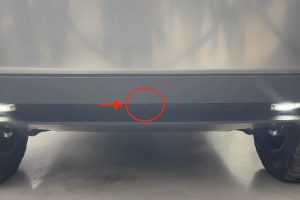- 🕚 Tesla has revised late-night driving’s impact on Safety Score, now considering driving from 11 PM to 4 AM instead of 10 PM to 4 AM.
- 📊 Tesla’s Safety Score evaluates various factors to predict future accident probabilities.
- 🔄 Tesla constantly refines Safety Score and other features for operational accuracy.
- 🚗 Late-night driving’s impact on Safety Score varies by hour, with each hour weighted differently.
- 📋 Tesla determines Safety Score using eight factors including forward collision warnings, hard braking, aggressive turning, unsafe following, excessive speeding, late-night driving, forced Autopilot disengagement, and unbuckled driving.
In our modern world, where technological advancements are constantly reshaping our daily lives, it’s no surprise that even the way we drive is being revolutionized. Tesla, a pioneer in electric vehicles and autonomous driving technology, has been at the forefront of this transformation. One area where Tesla is making significant strides is in enhancing safety during late-night drives.
Understanding Tesla’s Safety Score System
Tesla’s Safety Score system is a comprehensive tool designed to provide drivers with valuable feedback on their driving habits while also predicting the likelihood of future accidents. This system evaluates a multitude of factors, ranging from forward collision warnings to aggressive turning, to determine an individual’s safety rating.
The Evolution of Late-Night Driving Assessment
Recently, Tesla made a significant update to its Safety Score system by revising how late-night driving is factored into the equation. Previously, any driving between 10 PM and 4 AM was considered in the assessment. However, the company has now refined this window, focusing specifically on driving between 11 PM and 4 AM.
The Importance of Hourly Variation
What sets Tesla’s approach apart is its recognition of the varying risks associated with driving during different hours of the night. Not all late-night driving hours are created equal, and Tesla acknowledges this by assigning different weights to each hour between 11 PM and 4 AM. For example, driving at 2 AM may have a more significant impact on Safety Score than driving at 11 PM.
Factors Considered in Safety Score Calculation
Tesla’s Safety Score system takes into account eight key factors, each playing a crucial role in assessing a driver’s safety performance. These factors include:
- Forward collision warnings per 1,000 non-Autopilot miles
- Instances of hard braking
- Frequency of aggressive turning
- Unsafe following behavior
- Excessive speeding
- Late-night driving habits
- Forced Autopilot disengagement occurrences
- Instances of unbuckled driving
Continuous Improvement and Innovation
Tesla’s commitment to innovation is evident in its continuous refinement of the Safety Score system. By constantly analyzing data and updating algorithms, the company strives to enhance the accuracy and effectiveness of its safety assessments.
Empowering Drivers for Safer Journeys
Ultimately, Tesla’s goal is to empower drivers with the information and tools they need to make safer choices behind the wheel. By providing real-time feedback through the Safety Score system, Tesla encourages drivers to adopt safer driving behaviors, thereby reducing the risk of accidents and improving overall road safety.
Conclusion
As Tesla continues to push the boundaries of automotive technology, its emphasis on safety remains unwavering. By reimagining how late-night driving is assessed and incorporating a comprehensive set of factors into its Safety Score system, Tesla is leading the charge towards a future where road safety is paramount.





